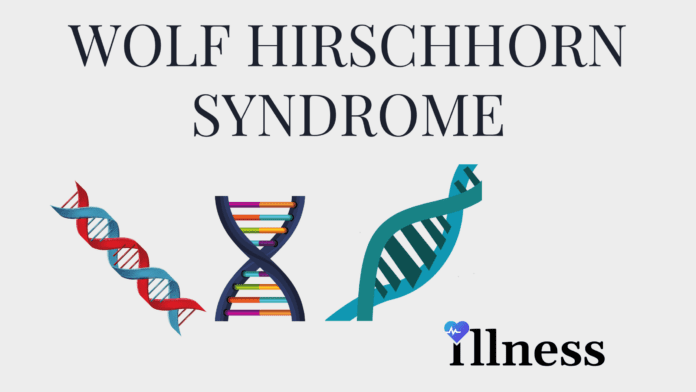Overview Of Wolf Hirschhorn Syndrome
Wolf-Hirschhorn syndrome is a condition that affects multiple parts of the body. Key features include a characteristic facial appearance, delayed growth and development, intellectual disability, and seizures.
Almost everyone with this disorder has specific facial features. This includes a broad, flat nasal bridge as well as a high forehead, which people often describe as a “Greek warrior helmet” appearance. The eyes have a wide space and may also be protruding. Other distinctive facial features include a shortened distance between the nose and upper lip (a short philtrum), a downturned mouth, a small chin (micrognathia), and poorly formed ears with small holes (pits) or flaps of skin (tags). Additionally, affected individuals may have asymmetrical facial features and an uncommonly small head (microcephaly).
Individuals with Wolf-Hirschhorn syndrome experience a delay in growth and development. Slow growth begins prior to birth. Affected infants usually have problems feeding, gaining weight, weak muscle tone (hypotonia), and underdeveloped muscles. There is also a significant delay in motor skills, and short stature is common.
Intellectual disabilities range from mild to severe. Compared to people with other forms of intellectual disability, their socialization skills are strong. Verbal communication and language skills are typically weaker. Most children affected with Wolf-Hirschhorn also have seizures, which may be resistant to treatment. However, seizures tend to disappear with age.
Other features of Wolf-Hirschhorn syndrome include skin changes such as mottled or dry skin, skeletal abnormalities, dental problems, and an opening in the lip, or in the roof of the mouth (cleft lip/cleft palate). In addition, Wolf-Hirschhorn syndrome can also cause abnormalities of the eyes, heart, genitourinary tract, and brain.
A similar condition, known as Pitt-Rogers-Danks syndrome, has features that overlap with Wolf-Hirschhorn syndrome. Researchers now recognize that both conditions are actually part of a single syndrome with variable signs and symptoms.
Commonly Associated With
- 4p deletion syndrome
- 4p- syndrome
- chromosome 4p deletion syndrome
- chromosome 4p monosomy
- del(4p) syndrome
- monosomy 4p
- partial monosomy 4p
- WHS
Causes Of Wolf Hirschhorn Syndrome
The cause of Wolf-Hirschhorn syndrome is a deletion of genetic material which differs among affected individuals. Larger deletions typically result in more severe intellectual disabilities and physical abnormalities, while smaller ones, according to suggested studies, are typically less severe. This deletion takes place near the end of the short arm of chromosome 4, sometimes written as 4p-.
The signs and symptoms of Wolf-Hirschhorn are related to the loss of multiple genes that occur on the short arm of chromosome 4. Specifically, NSD2, LETM1, and MSX1 are the genes that are deleted in those displaying signs and symptoms of this disorder. These genes play significant roles in early development, although many of their specific functions are unknown.
Researchers associatethe loss of gene NSD2 with the many features of Wolf-Hirschhorn syndrome. This includes the distinctive facial appearance as well as the developmental delay. Researches associate the deletion of the LETM1 gene with seizures, while a loss of the MSX1 gene may be responsible for the dental abnormalities, cleft lip, and/or cleft palate that often appear with this condition.
Scientists are working to discover additional genes that contribute to the characteristic features of Wolf-Hirschhorn syndrome.
Other
The prevalence of Wolf-Hirschhorn syndrome is roughly 1 in 50,000 births. However, this may be an underestimate as it is likely that some affected individuals do not seek a diagnosis.
Wolf-Hirschhorn syndrome occurs in about twice as many females as males, although the reason for this is unknown. Between 85 and 90 percent of all Wolf-Hirschhorn syndrome cases are not hereditary. In fact, they result from a chromosomal deletion that happens as a random (de novo) event during the formation of reproductive cells (eggs or sperm) or in early embryonic development. In addition, more complex chromosomal rearrangements can also occur as de novo events. This might help explain the variability in the condition’s signs and symptoms. De novo chromosomal changes occur in people with no family history of the disorder.
Chromosomal Abnormalities
A minor percentage of all people with Wolf-Hirschhorn syndrome have the disorder due to an unusual chromosomal abnormality such as a ring chromosome 4. Ring chromosomes occur when the chromosome breaks in two places. After this break, the ends of the chromosome arms fuse together to form a circular structure. Genes near the ends of the chromosome are lost during this process.
In the remaining cases of Wolf-Hirschhorn syndrome, an individual with this condition inherits a copy of chromosome 4 with a deleted segment. In these instances, one of the individual’s parents carries a chromosomal rearrangement between chromosome 4 and another chromosome. Professionals refer to this as a balanced translocation.
Because no genetic material is either gained or lost in a balanced translocation, these chromosomal changes typically do not result in any health problems. Translocations can become unbalanced, however, as they are passed to the next generation. An unbalanced translocation that deletes genes near the end of the short arm of chromosome 4 can be inherited in some individuals with Wolf-Hirschhorn syndrome. A loss of these genes results in intellectual disability, slow growth, and other health problems distinctive of this disorder.



